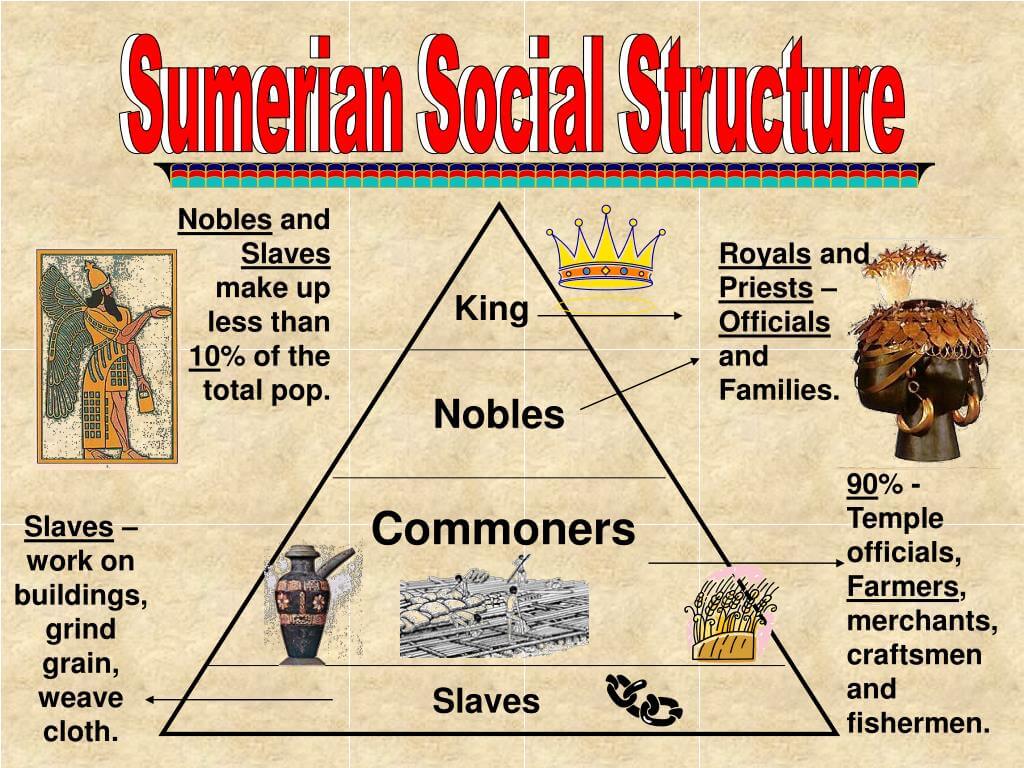The social structure of Mesopotamia is a fascinating tapestry that reveals the complexities of one of the world’s earliest civilizations. With its roots in the fertile plains between the Tigris and Euphrates rivers, Mesopotamia not only birthed some of humanity's first cities but also established a rigid social hierarchy that influenced the daily lives of its inhabitants. Understanding this social structure is crucial to grasping how ancient societies functioned and thrived amidst diverse challenges, including warfare, agriculture, and trade.
In Mesopotamia, the social hierarchy was not merely a reflection of wealth but also of power, occupation, and family lineage. The structure consisted of distinct classes, ranging from the ruling elite to common laborers and enslaved individuals. Each class played a specific role in maintaining the stability and productivity of the society, which relied heavily on agriculture and trade. The social dynamics within this structure were further complicated by the presence of various city-states, each with its own rulers and laws, contributing to a rich tapestry of social interactions.
As we delve deeper into the Mesopotamia social structure, we will explore the various classes, their roles, and how they interacted with one another. We will also consider how this structure influenced not only the daily lives of the people but also the overall development of one of the world’s oldest civilizations. Join us as we uncover the layers of social stratification that defined life in Mesopotamia.
What Were the Key Classes in the Mesopotamia Social Structure?
The Mesopotamia social structure was primarily divided into several key classes:
- Royalty and Nobility: This top class included kings, queens, and high-ranking officials who held significant power and wealth.
- Priests and Priestesses: Serving the gods was a crucial role in Mesopotamian society, and priests had considerable influence over religious and political matters.
- Merchants and Artisans: This middle class contributed to the economy through trade and craftsmanship, playing a pivotal role in the growth of cities.
- Farmers and Laborers: The backbone of Mesopotamian agriculture, farmers worked the land and produced food, while laborers undertook various physical tasks.
- Slaves: Often prisoners of war or individuals in debt, slaves had the fewest rights and were vital to the labor force.
How Did Religion Influence the Mesopotamia Social Structure?
Religion played a fundamental role in shaping the Mesopotamia social structure. The city-states were often governed by theocratic rule, where the king was seen as an intermediary between the gods and the people. This intertwining of religion and governance meant that:
- Priests held considerable power, often rivaling that of secular rulers.
- Religious festivals and rituals reinforced social hierarchy, as they were exclusive to certain classes.
- Temples served as economic centers and were integral in supporting the social structure.
What Role Did Women Play in the Mesopotamia Social Structure?
The position of women in the Mesopotamia social structure varied significantly depending on their class. While women in the upper classes enjoyed certain privileges, such as property rights and education, those in lower classes had limited rights. Key points include:
- Women could own and manage property, especially in the upper echelons of society.
- Marriage was often a strategic alliance, affecting women’s roles and status.
- Some women held positions of power, such as priestesses or even queens, indicating a degree of influence.
How Did Trade and Economy Shape the Mesopotamia Social Structure?
Trade was a vital aspect of Mesopotamian life, influencing the social structure in various ways:
- The rise of merchants led to the emergence of a wealthy middle class, challenging the traditional power of the nobility.
- Economic roles were often hereditary, leading to the establishment of distinct merchant families.
- Trade relationships fostered connections between different city-states, altering social dynamics.
What Were the Consequences of the Rigid Social Structure?
The rigid social structure of Mesopotamia had several consequences for its people:
- Social mobility was limited, making it challenging for individuals to rise above their class.
- Class distinctions often led to conflict, especially during periods of economic hardship.
- The concentration of wealth and power in the hands of a few created tensions between classes.
How Did the Mesopotamia Social Structure Evolve Over Time?
Over centuries, the Mesopotamia social structure saw significant changes due to various factors:
- Conquests by outside powers brought new influences and altered existing hierarchies.
- The rise of new city-states and empires led to shifts in power and class definitions.
- Economic developments, such as the introduction of currency, changed trade dynamics and social roles.
What Legacy Did the Mesopotamia Social Structure Leave Behind?
The legacy of the Mesopotamia social structure is evident in various aspects of modern society:
- Many contemporary social hierarchies echo the class distinctions of ancient Mesopotamia.
- The governance systems established in Mesopotamia laid the groundwork for future civilizations.
- The importance of trade and economics in shaping social structures remains relevant today.
In conclusion, the Mesopotamia social structure is a captivating study of how various classes interacted, influenced one another, and contributed to one of the most remarkable civilizations in history. By examining its complexities, we gain valuable insights into the fabric of human society and the enduring impact of ancient cultures on the present day.
Peter Reckell: A Journey Through The Life Of A Soap Opera Legend
Unveiling The Life And Legacy Of Lisa Stahl
Exploring The Extraordinary Life Of Robert D. Nero


